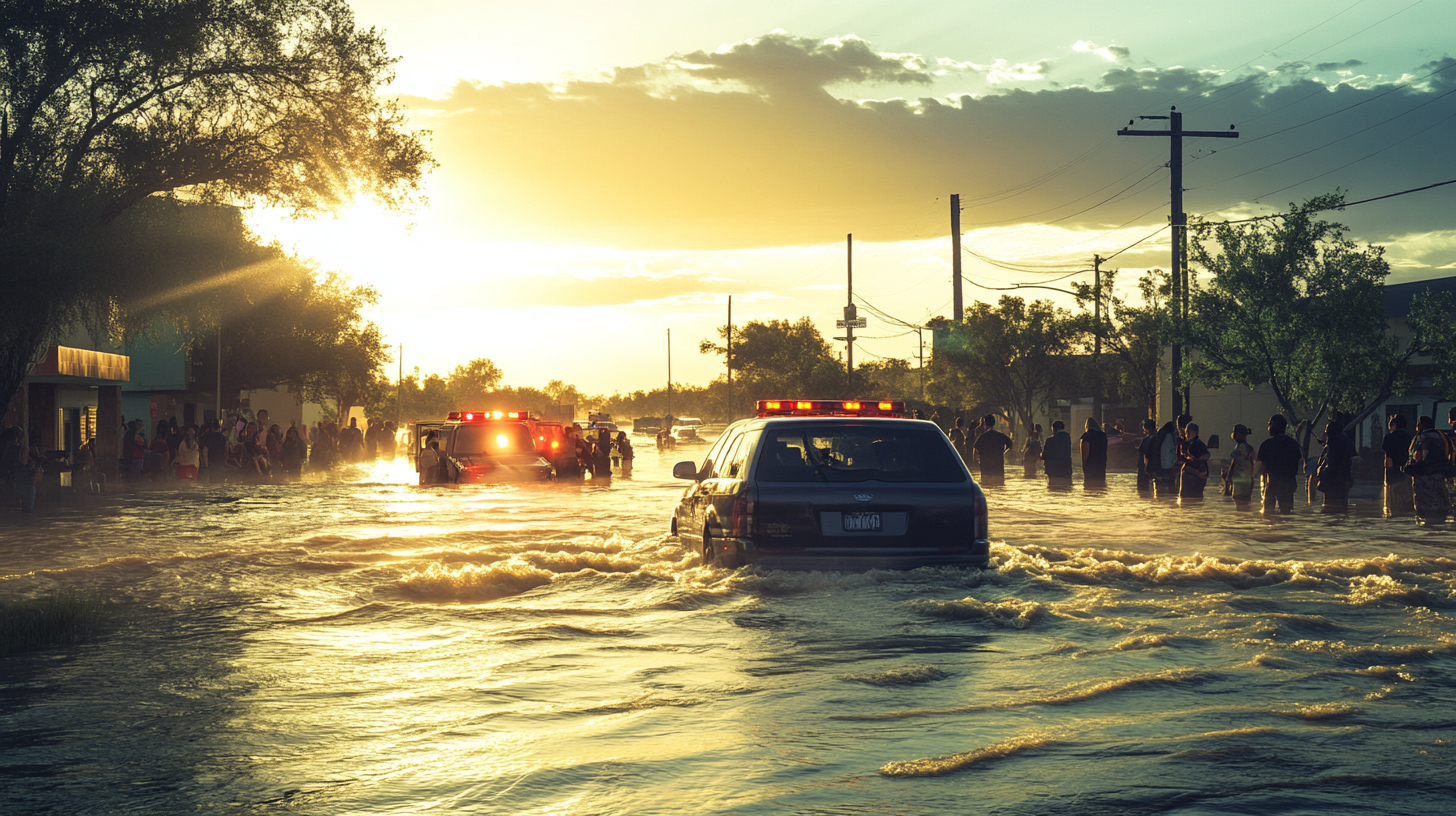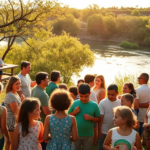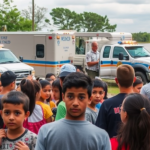South Texas Floods Claim Lives and Displace Hundreds: A Community Underwater
The ferocity of nature unfolded in South Texas last week when relentless storms unleashed over half a year’s worth of rainfall onto the Rio Grande Valley within a span of just 48 hours. This deluge has tragically claimed at least four lives and necessitated the rescue of hundreds of residents from rapidly rising floodwaters. As the community grapples with the aftermath, the situation remains dire while emergency services continue to operate at their limits.
A Region Submerged: The Impact of Unprecedented Rainfall
Hidalgo County, one of the most severely impacted areas, bore the brunt of nature’s wrath, with regions recording up to 14 inches of rain. Hidalgo County Judge Richard Cortez has described the situation as devastating. “Unfortunately, many areas of our county have experienced some flooding,” Cortez said in a video on social media. “All available resources are being deployed to mitigate the consequences as swiftly as possible.”
The disaster’s toll has also extended across the border, with the Mexican state of Tamaulipas reporting another death following severe rainfall amounts ranging between 7 and 12 inches. Among the heart-wrenching stories emerging from the chaos is an incident involving U.S. Customs and Border Protection, where a suspected human smuggling operation led to a fatality during the high storm waters. As further details emerge, the gravity of the crisis continues to deepen.
Disaster Declarations and Local Rescue Efforts
In response to the calamity, Texas Governor Greg Abbott issued a disaster declaration for the counties of Cameron, Starr, Willacy, and Hidalgo. The acknowledgment allows for streamlined assistance and support in high-impact areas, including cities like Alamo and Harlingen, where over 300 water rescues have been conducted. The governor urged residents to report flood damage to assess the vast scope of the catastrophe to allocate necessary resources adequately.
The flooding has not only struck residential neighborhoods but has also forced critical challenges upon the region’s agricultural backbone. Despite the deluge, Texas Agriculture Commissioner Sid Miller highlighted that the rains occurred downstream from areas experiencing acute drought and thus are unlikely to replenish dwindling water levels in the Rio Grande River. “While rain was desperately needed,” Miller noted, “the sheer volume has caused severe harm.”
The Valleys’ Resilience Faces Another Test
The Rio Grande Valley, affectionately known as the RGV, is no stranger to challenges. The region has historically grappled with severe weather conditions, economic hurdles, and the socio-political intricacies of its borderland identity. The recent floods compound existing stressors tapping into the Valley’s resilience—one that community members have consistently demonstrated through their unity and tenacity.
Jay Bragg, the associate director of the Texas Farm Bureau, emphasized the importance of local support structures. “We have a tightknit community in the Valley that rallies when disaster strikes. From volunteer efforts to local government initiatives, our response is always about working together to overcome adversity.”
Echoes of Previous Challenges and Glancing Ahead
The flooding underscores familiar challenges seen in past events, particularly the ongoing struggles with resources and infrastructure in South Texas. In years past, water rights conflicts and cross-border dynamics have further complicated emergency responses. This particular event might urge renewed discussions on infrastructure investments and climate adaptability strategies for the dynamic Valley landscape.
For the individuals and families impacted, the road to recovery is only just beginning. Beyond immediate relief efforts, long-term support networks must be established to address housing, health, and economic recovery. Officials highlight the critical role of federal partnerships and state assistance in rebuilding efforts.
Resources and Support for Affected Residents
Local agencies urge residents to remain safe, avoid floodwaters, and cooperate with emergency directives. Those needing assistance or seeking to report damage can visit the Texas Division of Emergency Management’s website for guidance. Officials also stress the importance of documenting all damage thoroughly for insurance and aid applications.
In Brownsville, the Community Resource Center is extending its services to offer shelter, food, and essential supplies to those displaced. Furthermore, local organizers plan to hold town halls and briefing sessions to distribute up-to-date information.
As South Texas navigates this crisis, the community’s spirit shines through stories of neighbors helping neighbors, tireless rescue efforts, and a deep commitment to rebuilding what was lost. The challenge remains towering, yet the resolve of the RGV stands strong, embodying the unyielding heat of South Texas’s soul in the face of adversity.







